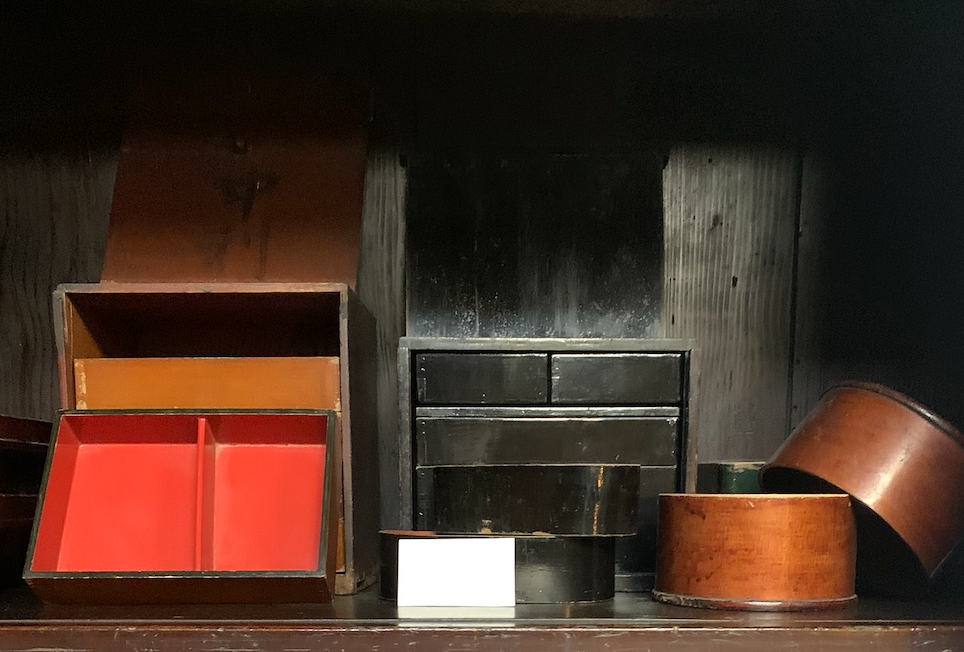
Kiso Lacquerware
Kiso Lacquerware
[Region] Nagano Prefecture [Overview] In the mid-Edo period, travelers traveling the Nakasendo Road were made with cypress, Katsura, and horse chestnuts, which were abundantly produced, to make magemono, potter's wheel work, and combs. It is said that they started to make them, and they were transported to Kyoto, Osaka, and Edo by travelers, and their recognition increased. The wood used as raw material was cut freely, but after May 1708, the ``edict to stop cutting the five trees'' was issued, threatening the survival of the company. However, under the patronage of the Yamamura family, who was the local governor at the time, lacquerware dealers were given the Owari clan's 'cypress bill' and were allowed to cut down the lacquerware wood. In the Genroku era, it was popular as a practical item for board, and in the Kansei period, ``Kisomono distributors'' were established in Kyoto, Osaka, and Edo. In order to improve their skills, the craftsmen even went to Wajima, which was said to be highly skilled at the time, to learn techniques. At the beginning of the Meiji period (1868-1912), an iron-containing clay called 'rusted clay' was discovered in the mountains near present-day Narai Station, which was excellent in mixing with lacquer, and a robust product was born.

[Representative technique]
Kiso Shunkei
In order to make the most of the beauty of the bark, high-quality Kiso cypress wood is selected, and the lacquer is rubbed in from the beginning without applying a base coat. Lacquer coating does not do the groundwork and repeats refined unrefined lacquer directly to bare wood, and, after doing "lacquer pickpocket", apply refined transparent lacquer. As for the bare wood structure, mold thing which "mandarin orange split" made of log into hegi using "hegiboutou", board thing or bending thing.
Kiso lacquered lacquer ware
A technique in which several layers of colored lacquer are applied on top of the lacquer for stenciling, and a mottled pattern is expressed by polishing. thing. After having put refined roiro lacquer using tampo, and having coated many kinds of refined colored lacquer on top of each other, sharpen using whetstone, whet charcoal. The finish should be "roiro-nuri".
Nuriwake Roiro Nuri
A technique to decorate and paint geometric patterns with several kinds of colored lacquer. The groundwork does "hard base ground structure" by repeatedly applying thing which mixed rust soil with unrefined lacquer. Final coat "paints separately" using many kinds of purified color lacquer. The finish should be "roiro-nuri".
Makie
It is a technique in which pictures, patterns, letters, etc. are drawn with lacquer on the surface of lacquerware, and metal powder such as gold and silver is “sprinkled” before it dries to fix it on the surface of the lacquerware. ``Hyomon'' or ``heidatsu'' is a method of fixing thin plates of gold and silver, ``chinkin'' is a method of embedding gold and silver foil in grooves carved into the surface of lacquerware, and patterns such as turban shells and abalone shells are used. It is one of the representative decoration techniques for lacquerware, along with raden, which involves pasting or embedding a cut-out object in the shape of a diamond. The oldest surviving maki-e material in Japan is the ``Makkin Rusaku'' on the scabbard of the ``Kingin Denso Karatachi'', a Shosoin Treasure. A scientific research study conducted by the Shosoin Office of the Imperial Household Agency in 2009-2010 confirmed that this was Togidashi Maki-e.
